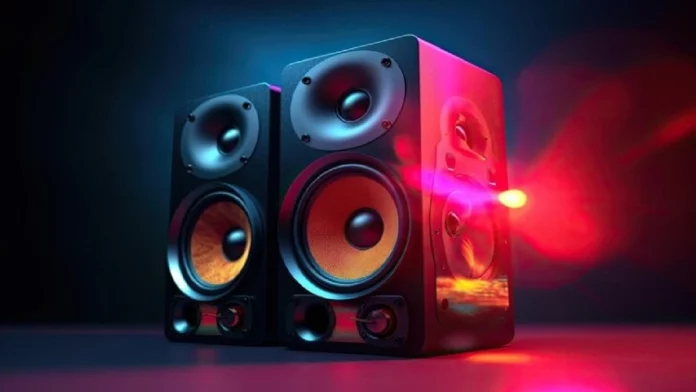Navigating the world of audio equipment can be both exhilarating and perplexing. Active speakers, in particular, have been the subject of various myths that often confuse even seasoned audiophiles.
With technological advancements and shifting trends, it’s crucial to stay updated with accurate information about active speakers — especially for those investing in sound systems for home or professional use.
This post aims to demystify some common misconceptions and provide a deeper understanding of what active speakers truly offer.
Myth #1: Active Speakers Sound Better Than Passive Speakers
This is perhaps one of the most pervasive myths in the audio world. The truth is, that the quality of sound is not inherently tied to whether a speaker is active or passive. Active speakers have built-in amplifiers, which technically gives them a more consolidated setup compared to passive speakers, which require external amplifiers. However, this doesn’t mean that active speakers automatically outshine their passive counterparts.
The sound quality of any speaker system is determined by multiple factors, including the design of the speaker, the quality of components, and the tuning by the manufacturer. When comparing active PA speakers to passive speakers of the same quality and from the same brand, the performance difference is often negligible. What an active speaker setup does offer is convenience. With the amplifiers already built-in, users don’t have to worry about matching the right amp to their speakers or dealing with cable clutter.
Myth #2: Active Speakers Are More Expensive Than Passive Speakers
The cost of active PA speakers versus passive speakers is another area where misconceptions abound. Active speakers typically come at a higher initial cost, but this additional price often includes the built-in amplifier. When comparing the total cost of setting up a passive speaker system (including the cost of the speakers, amplifier, and any additional components), it may turn out that passive systems can be more expensive.
Additionally, the investment in active speakers can be seen as more cost-effective over time. By having the amplifiers and crossovers integrated into each speaker, active setups tend to be more energy-efficient, potentially saving on electricity costs. They also provide finer control over the audio signal path, which can lead to better sound quality and potentially lower maintenance costs in the long run.
Myth #3: Passive Speakers Are More Reliable
Historically, passive speaker systems were considered more reliable because they had fewer built-in components to potentially fail. However, as manufacturing techniques improve and active speaker technology advances reliability has become less of a differentiator between the two types.
One could argue that active PA speakers have an edge in some reliability aspects. With the amplifiers and other components specifically designed to work with that speaker model, the risk of user error is eliminated. Many active speaker systems are also built with internal protection circuitry to safeguard against overheating and overloading, which can extend the life of the speaker and its components.
Myth #4: Active Speakers Are Only for Pro Audio and DJs
It’s not uncommon for people to associate active PA speakers primarily with professional settings, such as live performances and recording studios. While it’s true that active speakers have a strong presence in these environments due to their convenience and often portable designs, they are just as suitable for home audio setups.
Active speakers come in a variety of sizes and price ranges, making them versatile for different uses, including home theaters, gaming setups, and high-fidelity music listening. The integration of the amplifier within the speaker enclosure allows manufacturers to tailor the sound more precisely, offering consumers a broad array of options that cater to different aesthetic and acoustic preferences.
Myth #5: Active Speakers Do Not Need Any Additional Equipment
This is a partial myth. Active speakers do not necessarily require an additional amplifier, as they have this component built-in. However, they still might require other equipment depending on the setup. Most notably, source components (such as a CD player, turntable, or streaming device) will still be necessary.
For more complex audio setups or for achieving specific sound qualities, additional equipment like signal processors, equalizers, and mixers may be required. In these cases, the simplicity of having an integrated amp in an active speaker doesn’t eliminate the need for additional gear.
Myth #6: Active Speakers Are More Complicated to Set Up and Use
This myth stems from the misconception that active PA speakers need additional cabling and setup than passive speakers. In reality, the setup process for active speakers can be much simpler. With passive speakers, users have to connect the speakers to an appropriate amplifier, which can be an involved process considering the various components that need to be connected and tuned properly.
On the other hand, active speakers only require a power source and an audio input. This straightforward setup makes them an attractive choice for those looking to set up their audio system quickly and with minimal fuss. Furthermore, the built-in amplification of active speakers often includes convenient features like volume controls and user-friendly interfaces.
Myth #7: Active Speakers Are All the Same
Each pair of active PA speakers is unique, in its design, sound, and intended use. Just because an active speaker has a built-in amplifier doesn’t mean it will perform the same as another active speaker from a different brand or model. Manufacturers of active speakers put a great deal of effort into designing the integration of their amplifiers with the rest of the speaker components to achieve the best sound possible for their target audience.
Consumers should carefully consider their needs and the anticipated use of the speakers when selecting an active pair. Think about the room size, the type of content that will be played through the speakers, and the kind of sound profile that is preferred.



































